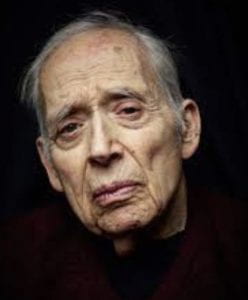
As projects, readings, and conversations intersect, there are two complementary effects: that of apophasis, the implication of something with the discovery of a symmetry in our ignorance of it — the idea summarized in the Latin motto ex falso sequitur quodlibit. This is related to the idea Bloom expounded in his Anxiety of Influence. Bloom’s book is in fact an example of apophasis, or indication by omission, since Bloom did not seem to notice the symmetry of the six critical terms he refashioned from classical thought: clinamen, tesseræ, dæmon, askesis, apophrades, and kenosis. The elegance of this list is that any one term can be used to characterize the logic of the entire set. In general there are three sets of pairs.
The Lucretian term clinamen (swerve, turbulence) is co-functional with tesseræ, the halves broken from a single disk as a token to insure that, after a period of absence, friends will be re-united. The jagged edge created by the snap of the token into two parts is the “answer” to the question, “what is clinamen?” just as clinamen is the answer to the question “what is/are the tesseræ?” The concept of disturbance becomes a way of explaining how fracture (both ex falso conditions) leads to a test of authenticity. Tesseræ brings to clinamen the concept of a test following turbulence just as clinamen informs tesseræ as a liquid flow from friend to friend, both the basis and cure of rupture.
Dæmon and askesis could be called the twin features of the vagus nerve, since they preside over a logic of “fight or flight.” At least in Bloom’s terms, askesis relates most strongly to the motive for retreat, insulation, and incubation, while dæmon is the condensation of fears motivating this contraction. One need think only of Henry VIII’s destruction of the monasteries following the Second Suppression Act of 1539 to understand this dynamic pairing. But, before Henry there was the devil, the true “hero” of monastic life’s perfection of architectures and rituals dedicated to isolation (idempotency).
Apophrades is the “return of the dead,” or more specifically the voice of the dead, and here Bloom’s supplement is Freud’s essay on negation and other writings that note that the unconscious is incapable of binary distinctions, which is why the dead show up in dreams, apparently in good health. On account of this disability, the unconscious is the proving ground of the ex falso principle. In dreams, the “anything is possible” component is played out thanks to two forces, condensation and displacement. One signifier will represent a family of relations among signifiers; and any conflict or strong feeling will be moved to less threatening venue. In the voice of the dead, we may enjoy these dream qualities while awake, whenever our paths are crossed by the shadow of the master signifier, an empty structure which, although devoid of content, is directional (valent) and valorous. The dead are heroic by etymology (ἥρως originally meant, simply, a dead man). Their reputation of protecting the household comes from the traditions of the hearth, where the manes (the panes and lares) insured good luck and provided intel of the future in return for cooked sacrifices mediated by the female members of the family. Apophrades as a critical term stretches back to the uncanny practices of “cyclopean” cultures predating the consolidation of family religion into civic worship. As such, it is the nerve that preserves the primitive impulses that have been re-purposed through the secularization that Vico proposed in his “ideal eternal history.”
Apophrades is paired with kenosis, which Bloom repurposes as a critical version of the Freudian Unconscious, “that which we know but do not know we know.” Kenosis is what the apophrades is expected to deliver as prophecy, albeit in enigmatic form. Because kenosis is about the Unconscious as “structured like a language” (Lacan), it derives its chiastic relation to Being in the form of death’s relation to life. Lacan portrayed the speaking/being relation as a zero-sum. As consciousness became more and more dominated by language (the Symbolic), the powers of the Id, the being of the body so to speak, declined. Freud’s saying, Wo Es war, soll Ich werden (“Where ‘it’ — the Id? — was, there I shall be”). That is, the Symbolic subject is destined to return to its basis in being, the place “held open” by the Id. In ethnographic terms, this is the function of Hades as a repository for both the ancestral dead and eternal truths. This is the charged testimony of Er, the soldier whose story Plato recounts in The Republic. After a battle, Er (Ἠρός, appropriately) was thrown on a pile of corpses to be cremated but he came back to life after ten days. His account of life after death was taken to be authentic on the belief that he had truly died. The break between life and death is, ethnologically, a tesseræ. And, the resistance that forms an insulating boundary around dreams, limiting our memory and understanding of them, is a case of dæmon/askesis as well as apophrades/kenosis. No less is the strife of the Symbolic the clinamen that, when met by death, forms a disruption that is simultaneously a proof of authenticity.